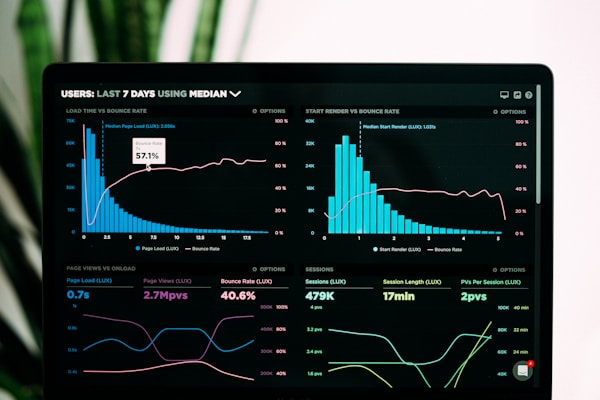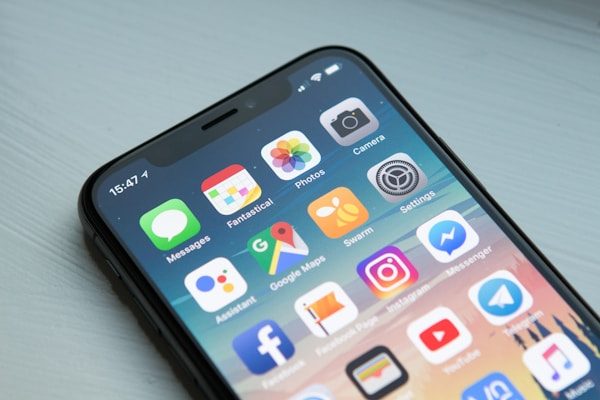Emma Rodriguez
Data Analytics Specialist
Published
Nov 1, 2025

Gift card programs generate extraordinary behavioral data that reveals deep insights about customer psychology, purchase patterns, and brand loyalty—yet most businesses barely scratch the surface of what this data can teach them. Companies that actively analyze gift card behavior patterns see 45-60% higher customer retention rates, identify high-value customer segments with 3x greater lifetime value, and optimize marketing spend efficiency by 35-50% compared to those treating gift cards as simple transactions. Understanding what gift card data reveals about customer behavior isn't just analytics—it's unlocking a strategic advantage that drives sustainable business growth.
This comprehensive guide explores the behavioral patterns hidden in gift card data, teaches you how to extract actionable insights from customer interactions, and reveals strategies for transforming raw analytics into decisions that enhance customer experiences, increase lifetime value, and build lasting loyalty programs that customers genuinely value and actively engage with.
The Psychology Behind Gift Card Behavior
Before diving into analytics techniques, understand the fundamental psychological drivers that make gift card behavior unique and revealing:
The Mental Accounting Effect
Gift card recipients demonstrate distinctly different purchasing behavior than customers spending their own money, revealing important psychological patterns:
Windfall Gain Psychology: Recipients perceive gift cards as "free money" even though someone paid for them. This mental accounting quirk leads to different purchase behaviors—recipients typically spend 20-40% more per transaction than regular customers, buy premium or indulgent items they wouldn't normally purchase, and show less price sensitivity. Understanding this psychology helps optimize product placement and merchandising for gift card users.
Overspending Tendency: Gift card users frequently spend beyond their card balance (60-75% of users according to industry studies), adding their own money to complete purchases. Average overspend: $38-$59 per transaction. This represents pure incremental revenue and reveals which products drive overspending behavior.
Permission to Splurge: Gift cards psychologically "permit" recipients to buy items they consider treats or luxuries. Analytics revealing which products gift card users purchase most frequently identify your brand's aspirational offerings—items customers want but hesitate to buy with their own money.
Giver vs. Recipient Behavior Patterns
Gift card transactions involve two distinct customer types with different behaviors and value:
Giver Behavior: Gift card purchasers often become more loyal customers themselves. Data shows that 35-45% of gift card givers make additional purchases for themselves within 30 days of giving a gift card. They demonstrate higher engagement, better retention, and increased lifetime value. Tracking giver behavior separately from recipient behavior reveals a valuable customer segment worth nurturing.
Recipient Acquisition Opportunity: Gift card recipients represent your highest-quality new customer acquisition channel. Unlike customers acquired through paid advertising, recipients come with implicit endorsement from someone who knows them. First-time redemption conversion rates (recipients who become repeat customers) average 25-40%—far higher than traditional acquisition channels. Analyzing which recipients convert and why helps optimize the recipient experience.
The Urgency vs. Procrastination Paradox
Gift card redemption timing reveals interesting behavioral patterns:
Approximately 30% of recipients redeem within the first week (high-urgency segment), 40% redeem within 30-60 days (normal redemption), and 30% take 90+ days or never redeem (procrastinators). Each segment exhibits different purchase behaviors, lifetime values, and marketing responsiveness. Understanding these redemption timing segments enables targeted communication strategies that accelerate redemption and increase conversion.
Key Behavioral Metrics and What They Reveal
Focus on behavioral metrics that provide actionable insights about customer psychology and preferences:
Redemption Patterns and Timing
- Time-to-First-Redemption: Days between gift card receipt and first use. Fast redeemers (0-7 days) show high brand affinity and convert to repeat customers at higher rates. Slow redeemers (60+ days) may need additional motivation. Segment by redemption speed to tailor communication strategies.
- Day-of-Week and Time-of-Day Patterns: When do recipients prefer to shop? Weekend vs. weekday redemption patterns reveal lifestyle preferences. Evening vs. daytime redemption indicates working habits. Use these patterns to optimize promotional timing and customer service staffing.
- Redemption Velocity: How quickly recipients spend their entire balance. Fast depletion (1-2 transactions) indicates strong product-market fit and immediate need satisfaction. Slow depletion over many small transactions reveals browsing behavior and experimentation. Multiple-visit redeemers show higher conversion potential.
- Seasonal Redemption Spikes: Gift cards received during holidays often redeem in January-February (40-50% of holiday gift cards). This post-holiday redemption surge represents a critical engagement window. Analytics help predict and prepare for these spikes.
Purchase Behavior and Product Affinity
- Product Category Preferences: What do gift card users buy most frequently? Compare to general customer purchases to identify "gift card products"—items recipients gravitate toward. These products should be prominently featured in recipient communications and store merchandising.
- Premium vs. Value Purchases: Do recipients trade up to premium products or seek maximum quantity? Gift card users typically skew 30-50% more toward premium items than regular customers—they're treating themselves. Understanding this helps tailor product recommendations.
- Average Transaction Value: Gift card redemption transactions typically exceed regular customer transactions by 25-45%. Track this premium to understand the incremental value gift card programs generate. Declining premiums may indicate program issues.
- Basket Composition Analysis: What combinations of products do recipients purchase together? Cross-sell and upsell opportunities become apparent through basket analysis. Recipients buying coffee might also buy pastries—create targeted bundling offers.
- Out-of-Pocket Spending: How much additional money do recipients spend beyond card balance? Higher overspend indicates stronger engagement and satisfaction. Track overspend by product category to identify what drives incremental spending.
Segmentation Strategies for Deeper Insights
Aggregate gift card metrics obscure important patterns. Sophisticated segmentation reveals actionable insights about different customer groups:
Behavioral Segmentation
Divide customers based on how they interact with gift cards:
- The Immediate Redeemer: Uses gift card within 7 days. Shows high engagement and immediate need. Highest conversion rate to repeat customer (50-60%). Target with "welcome" messaging and loyalty program enrollment. Represents your most valuable segment.
- The Thoughtful Browser: Takes 30-60 days to redeem, makes multiple small purchases. Researches carefully before buying. Conversion rate: 30-40%. Provide detailed product information, reviews, and comparison tools. Educational content resonates with this segment.
- The Procrastinator: Takes 90+ days to redeem or never redeems. Lowest conversion rate (10-20%). Requires proactive outreach with urgency messaging, product recommendations, and limited-time incentives. Many eventually redeem with proper prompting.
- The Big Spender: Redeems entire balance plus significant out-of-pocket spending in single transaction. Shows strong purchase intent and product desire. Average overspend: $75-$150. Target with premium product recommendations and VIP treatment.
- The Splurger: Uses gift card for indulgent purchases they wouldn't normally buy. Reveals your aspirational product positioning. Products they purchase should be prominently featured in marketing to all customer segments.
Demographic and Geographic Segmentation
When data permits, demographic analysis reveals important patterns:
- Age-Based Behavior: Younger recipients (18-34) typically redeem faster and prefer online channels. Older recipients (55+) take longer to redeem and prefer in-store experiences. Middle-aged recipients (35-54) show highest overspend rates. Tailor messaging and channels accordingly.
- Geographic Patterns: Urban recipients redeem faster (typically within 14 days) than suburban/rural recipients (30-45 days average). Urban areas show higher online redemption rates. Understanding geographic patterns helps optimize store locations and digital marketing.
- Gender Differences: While individual preferences vary widely, aggregate data often shows women redeem gift cards more thoroughly (lower breakage) and spend more time selecting purchases. Men often redeem faster but in fewer transactions. Use these patterns carefully—avoid stereotyping individuals.
Value-Based Segmentation
Segment by gift card value to understand amount-based behavior differences:
- Small Cards ($10-$25): Often given casually or as stocking stuffers. Recipients may combine with other small cards or personal funds for larger purchases. Lower conversion rates but high volume. Quick redemption (average 18 days).
- Medium Cards ($50-$100): Most common gift card value. Recipients take time to choose carefully (average 35 days to redeem). Highest conversion rates (35-45%). Optimal balance of perceived value and usability.
- Large Cards ($150+): Given for special occasions or by corporate buyers. Recipients treat as significant windfall, often "saving" for special purchases (average 45-60 days to redeem). Very high overspend rates (average $100+ out-of-pocket). Premium product purchases common.
Building Customer Loyalty Through Behavioral Insights
Transform behavioral understanding into loyalty-building actions:
Creating Exceptional First Experiences
First redemption creates lasting impressions that determine conversion success:
- Frictionless Redemption: Analyze redemption friction points—difficult balance checking, confusing checkout processes, limited payment options. Eliminate every obstacle. Gift card redemption should be the easiest transaction recipients ever complete. Use analytics to identify and fix pain points.
- Personalized Welcome: Greet gift card recipients by name (if known), acknowledge who sent the gift, and express genuine appreciation for trying your brand. Personalization increases conversion by 25-35%. "Sarah sent you this gift because she thinks you'll love us—let us prove her right!"
- Guided Discovery: Help recipients find products they'll love quickly. Use behavioral data to predict preferences. Provide curated collections, bestseller showcases, and intuitive navigation. Recipients shouldn't struggle to find redemption-worthy items.
- Exceeding Expectations: Surprise recipients with unexpected value—free shipping, gift wrapping, or small bonuses. Small delighters create disproportionate loyalty. "Your gift card includes free expedited shipping—enjoy!" Recipients remember generosity.
Post-Redemption Relationship Building
The sale doesn't end with redemption—it's the beginning of potential long-term relationships:
- Gratitude and Feedback: Thank recipients for trying your brand and ask for feedback. "We hope you loved your purchase! What did you think?" Shows you value opinions and provides valuable data. Recipients who provide feedback show 40% higher conversion rates.
- Next Purchase Incentive: Offer compelling incentives for second purchases: "You used your gift card—here's 20% off your next purchase!" Reduces time-to-second-purchase, a critical conversion milestone. Personalize discount to products they browsed but didn't buy.
- Loyalty Program Enrollment: Automatically enroll recipients in loyalty programs or offer easy enrollment with bonus points. "You earned 500 welcome points for your first purchase!" Loyalty program members show 3-5x higher retention than non-members.
- Relevant Content and Education: Share content related to their first purchase. Bought running shoes? Send training tips, race schedules, or product care guides. Demonstrate expertise and build relationships beyond transactions.
Identifying and Nurturing High-Value Segments
Focus resources on recipients most likely to deliver long-term value:
- VIP Recipient Treatment: Identify high-potential recipients through early behaviors (fast redemption, premium purchases, high engagement). Provide white-glove treatment—priority support, exclusive offers, early access to new products. Small investments in high-LTV customers generate outsized returns.
- Win-Back Campaigns for At-Risk Recipients: Identify recipients showing disengagement signals (long time since redemption, abandoned carts, declining email engagement). Launch targeted win-back campaigns with compelling incentives before they churn completely.
- Referral Encouragement: Recipients who become loyal customers are prime referral sources. They've experienced both sides—receiving and loving your brand. Encourage them to give gift cards to others: "Share the love—send a gift card to a friend and you both get 15% off!"
Advanced Analytics Techniques
Sophisticated analysis methods unlock deeper insights for competitive advantage:
Cohort Analysis for Understanding Trends
Track groups of recipients who received cards during the same period:
Compare holiday cohorts (December recipients) to non-holiday cohorts (other months). Do holiday recipients redeem differently? Show different conversion rates? Understanding cohort differences helps optimize seasonal strategies. Track cohorts over time—do Q1 recipients eventually catch up to Q4 recipients in lifetime value, or do differences persist? Cohort analysis reveals whether improvements you make actually work.
Funnel Analysis for Optimization
Map complete customer journeys from receipt through conversion:
Track progression through stages: Card receipt → Email open → Website visit → Product view → Add to cart → Redemption → Second purchase → Loyal customer. Calculate conversion rates between each stage. Identify where recipients drop off most frequently. Small improvements at high-drop-off stages produce significant overall conversion increases. If 60% open emails but only 30% visit the site, focus on improving email-to-click rates.
Attribution Modeling
Understand how different touchpoints contribute to redemption and conversion:
Recipients typically interact with multiple touchpoints before redeeming—delivery email, reminder emails, website visits, social media, in-store visits. Simple last-click attribution misses the full picture. Use multi-touch attribution to understand how each touchpoint contributes. This reveals which marketing activities actually drive behavior change versus which simply capture credit at conversion.
Sentiment Analysis from Qualitative Data
Analyze customer feedback, reviews, and communications for emotional insights:
Gift card recipient feedback reveals what drives delight versus disappointment. Analyze customer service interactions, social media mentions, and survey responses using sentiment analysis tools. Positive sentiment correlates with conversion; negative sentiment predicts churn. Identifying sentiment drivers enables targeted improvements.
Conclusion
Gift card analytics reveals extraordinary insights about customer psychology, preferences, and behaviors that drive strategic business decisions. By understanding redemption patterns, purchase behaviors, conversion drivers, and lifetime value indicators, businesses transform gift cards from simple transactions into powerful customer acquisition and loyalty-building tools. The most successful companies treat gift card analytics not as retrospective reporting but as forward-looking intelligence that informs product development, marketing strategy, customer experience optimization, and long-term planning.
The key to analytics success lies in moving beyond surface-level metrics to deep behavioral understanding, implementing sophisticated segmentation strategies, building predictive models that anticipate customer needs, and most importantly, taking action on insights discovered. Data without action generates no value—the businesses that win are those that systematically test, learn, and optimize based on what gift card behavior reveals about their customers' true preferences and decision-making patterns.
Ready to unlock the full potential of your gift card analytics and transform behavioral insights into business growth? Contact WePass for expert consultation on building comprehensive analytics infrastructure, implementing advanced segmentation strategies, and creating data-driven gift card programs that drive measurable improvements in customer acquisition, retention, and lifetime value.



